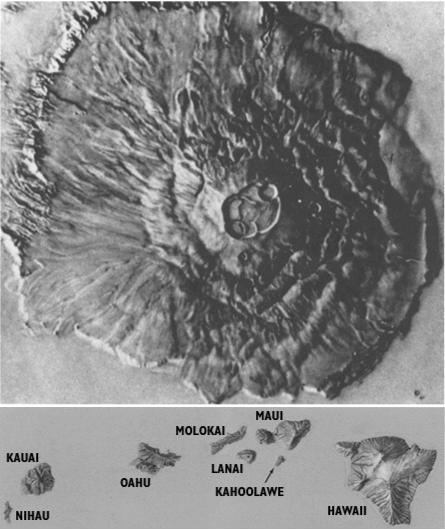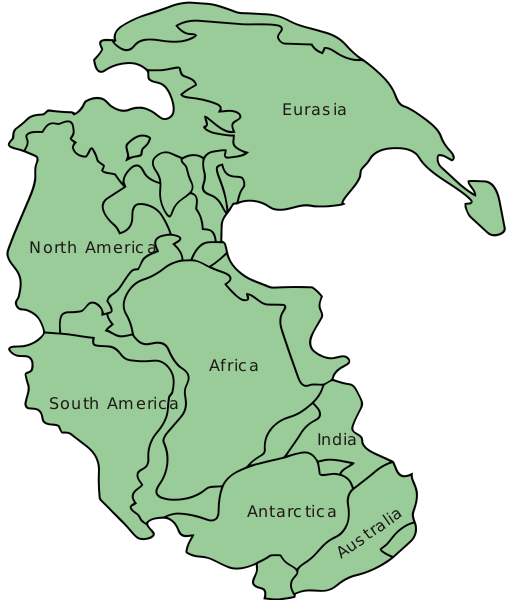In 1993, oceanographer William Sager began studying the massive underwater mountain mass about 1,000 miles off the coast of Japan in a mountain range known as the Shatsky Rise. At that time, Sager was with the Texas A&M College of Geosciences. He nicknamed the large mountain mass “Tamu Massif” —“Tamu” for the abbreviation of Texas A&M and “Massif” for the French word frequently used to describe a large mountain mass.
Ten years later Dr. William Sager, now with the University of Houston’s Earth and Atmospheric Sciences Department, announced that Tamu Massif was actually one single volcano on September 5, 2013.
Since they are submerged beneath the oceans in remote locations and therefore difficult to study, far less is known about volcanoes beneath the sea than those that tower above us on land. The origins of underwater volcanoes are murky; their structures and how they erupt and evolve is unclear.
Multichannel seismic profiles and rock samples taken from Integrated Ocean Drilling Program core sites were used to interpret the structure of Tamu Massif, the oldest and largest edifice of the Shatsky Rise oceanic plateau in the northwestern Pacific Ocean.
Tamu Massif is seen to be a single, immense volcano, constructed from massive lava flows that emanated from the volcano center to form a broad, shield-like mound the size of New Mexico. The volcano has anomalously low slopes, probably due to high effusion rates and low viscosity of the erupting lava (i.e. being underneath all that water makes it difficult for the lava to flow).
The largest single volcano on Earth, Tamu Massif is comparable in size to the largest known volcano in the solar system, Olympus Mons on Mars. Data from Tamu Massif document a class of oceanic volcanoes that is distinguished by its size and shape from the thousands of common seamounts found throughout the oceans.
Next year, William Sager and his team will return to Tamu Massif to collect more data bearing on its shape and formation.
Dr. William Sager will give a vivid presentation on Tamu Massif at the Houston Museum of Natural Science on Tuesday, June 24 at 6:30 p.m. to complement Nature Unleashed: Inside Natural Disasters, now on display at HMNS.
HMNS Distinguished Lecture
Tamu Massif, The World’s Biggest Volcano Is Hiding Beneath the Sea
William W. Sager, Ph.D.
Tuesday, June 24, 6:30 p.m.
Click here or call 713-639-4629 for advance tickets.
 Tamu Massif, the world’s largest volcano, was discovered in 2013 in the northwestern Pacific Ocean by a team of researchers lead by Dr. William Sager. Constructed from massive lava flows that emanated from the volcano’s center, Tamu Massif is comparable in size to the largest known volcano in the solar system, Olympus Mons on Mars. Dr. Sager will explain how he is unlocking the murky secrets of oceanic plateau structure, how they erupt and evolve using multichannel seismic profiles and core samples from the Integrated Ocean Drilling Program, and why this new data is important to you. Professor of Earth and atmospheric sciences at the University of Houston, Dr. William W. Sager leads research vessels to sea to collect geological data.
Tamu Massif, the world’s largest volcano, was discovered in 2013 in the northwestern Pacific Ocean by a team of researchers lead by Dr. William Sager. Constructed from massive lava flows that emanated from the volcano’s center, Tamu Massif is comparable in size to the largest known volcano in the solar system, Olympus Mons on Mars. Dr. Sager will explain how he is unlocking the murky secrets of oceanic plateau structure, how they erupt and evolve using multichannel seismic profiles and core samples from the Integrated Ocean Drilling Program, and why this new data is important to you. Professor of Earth and atmospheric sciences at the University of Houston, Dr. William W. Sager leads research vessels to sea to collect geological data.










